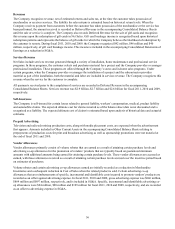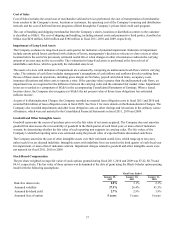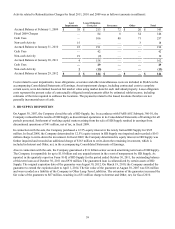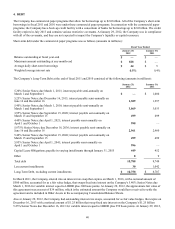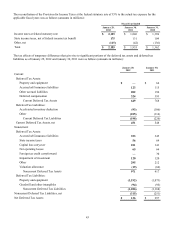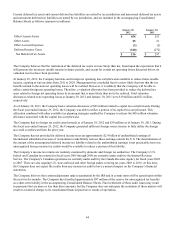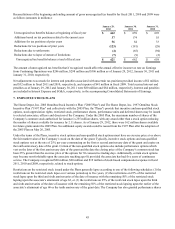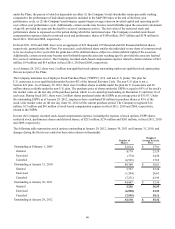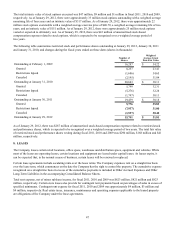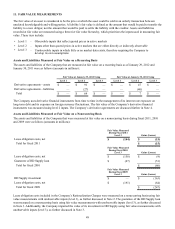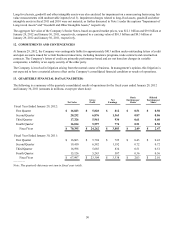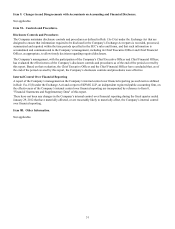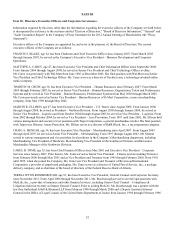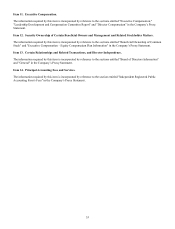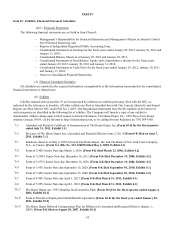Home Depot 2011 Annual Report Download - page 51
Download and view the complete annual report
Please find page 51 of the 2011 Home Depot annual report below. You can navigate through the pages in the report by either clicking on the pages listed below, or by using the keyword search tool below to find specific information within the annual report.
45
Reconciliations of the beginning and ending amount of gross unrecognized tax benefits for fiscal 2011, 2010 and 2009 were
as follows (amounts in millions):
Unrecognized tax benefits balance at beginning of fiscal year
Additions based on tax positions related to the current year
Additions for tax positions of prior years
Reductions for tax positions of prior years
Reductions due to settlements
Reductions due to lapse of statute of limitations
Unrecognized tax benefits balance at end of fiscal year
January 29,
2012
$ 662
37
56
(123)
(4)
(7)
$ 621
January 30,
2011
$ 659
174
84
(181)
(65)
(9)
$ 662
January 31,
2010
$ 695
55
33
(28)
(94)
(2)
$ 659
The amount of unrecognized tax benefits that if recognized would affect the annual effective income tax rate on Earnings
from Continuing Operations was $246 million, $298 million and $386 million as of January 29, 2012, January 30, 2011 and
January 31, 2010, respectively.
Net adjustments to accruals for interest and penalties associated with uncertain tax positions provided income of $2 million
and $32 million in fiscal 2011 and 2010, respectively, and expense of $41 million in fiscal 2009. Total accrued interest and
penalties as of January 29, 2012 and January 30, 2011 were $80 million and $84 million, respectively. Interest and penalties
are included in Interest Expense and SG&A, respectively, in the accompanying Consolidated Statements of Earnings.
7. EMPLOYEE STOCK PLANS
The Home Depot, Inc. 2005 Omnibus Stock Incentive Plan ("2005 Plan") and The Home Depot, Inc. 1997 Omnibus Stock
Incentive Plan ("1997 Plan" and collectively with the 2005 Plan, the "Plans") provide that incentive and non-qualified stock
options, stock appreciation rights, restricted stock, performance shares, performance units and deferred shares may be issued
to selected associates, officers and directors of the Company. Under the 2005 Plan, the maximum number of shares of the
Company’s common stock authorized for issuance is 255 million shares, with any award other than a stock option reducing
the number of shares available for issuance by 2.11 shares. As of January 29, 2012, there were 162 million shares available
for future grants under the 2005 Plan. No additional equity awards could be issued from the 1997 Plan after the adoption of
the 2005 Plan on May 26, 2005.
Under the terms of the Plans, incentive stock options and non-qualified stock options must have an exercise price at or above
the fair market value of the Company’s stock on the date of the grant. Typically, incentive stock options and non-qualified
stock options vest at the rate of 25% per year commencing on the first or second anniversary date of the grant and expire on
the tenth anniversary date of the grant. Certain of the non-qualified stock options also include performance options which
vest on the later of the first anniversary date of the grant and the date the closing price of the Company’s common stock has
been 25% greater than the exercise price of the options for 30 consecutive trading days. Additionally, certain stock options
may become non-forfeitable upon the associate reaching age 60, provided the associate has had five years of continuous
service. The Company recognized $20 million, $20 million and $19 million of stock-based compensation expense in fiscal
2011, 2010 and 2009, respectively, related to stock options.
Restrictions on the restricted stock issued under the Plans generally lapse according to one of the following schedules: (1) the
restrictions on the restricted stock lapse over various periods up to five years, (2) the restrictions on 25% of the restricted
stock lapse upon the third and sixth anniversaries of the date of issuance with the remaining 50% of the restricted stock
lapsing upon the associate’s attainment of age 62, or (3) the restrictions on 25% of the restricted stock lapse upon the third
and sixth anniversaries of the date of issuance with the remaining 50% of the restricted stock lapsing upon the earlier of the
associate’s attainment of age 60 or the tenth anniversary of the grant date. The Company has also granted performance shares



